
Australian Journal of Chemistry
Volume 68 Number 9 2015
RESEARCH FRONT: 2014 RACI National Congress

A selection of papers authored by speakers at the National Congress of the Royal Australian Chemical Institute held in Adelaide, 7–12 December 2014, is presented.
CH15406Total Radiosynthesis: Thinking Outside ‘the Box'
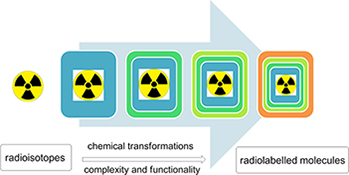
A new avenue to develop radiotracers that were previously unattainable owing to the lack of efficient radiosynthetic methods is necessary to work towards our ultimate, albeit impossible goal – the concept we term total radiosynthesis – to radiolabel virtually any molecule.
CH15095Oximes in the Isoxazolone, Pyrazolone, and 1,2,3-Triazolone Series: Experimental and Computational Investigation of Energies and Structures of E/Z Isomers of α-Oxo-Oximes in the Gas Phase and in Solution
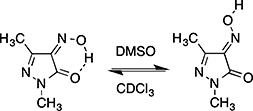
The structures of a series of heterocyclic α-oxo-oximes were investigated experimentally and computationally. The preferred configurations of α-oxo-oximes can be understood on the basis of steric hindrance (disfavouring E isomers), lone-pair repulsion between C=O and OH groups (disfavouring ZE isomers), and, most importantly, intramolecular H-bonding (favouring ZZ isomers) and intermolecular H-bonding (favouring EE isomers).
CH15134Adsorption of Water and Methanol on Highly Graphitized Thermal Carbon Black and Activated Carbon Fibre
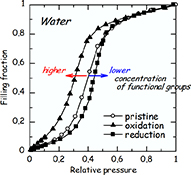
The effects of changing the concentration of the functional groups on water adsorption on activated carbon fibres which were treated by oxidation or reduction were investigated. The onset of water adsorption in the micropores shifts to lower pressure when the concentration of functional groups is high, and vice versa.
CH15178Syntheses of Iron(0) Complexes of Symmetrical Trialkylphosphines with Three Terminal Vinyl Groups, P((CH2)mCH=CH2)3

(BDA)Fe(CO)3 (BDA = benzylideneacetone) is sequentially treated with P((CH2)mCH=CH2)3 (m = 4–8), NO+BF4–, and n-Bu4N+X– (X = Cl, Br, I, CN) to give three series of trigonal bipyramidal trans bis(phosphine) complexes, 2 (60–75 %), 3 (88–98 %), and 4-X (73–93 %), all of which can potentially undergo three-fold intramolecular ring-closing metatheses to give gyroscope-like complexes VII.
CH15136Fe(dppe)(η5-C5Me5)-Based Phenylalkynyl Complexes Featuring an NO2 End Group: A Theoretical Analysis
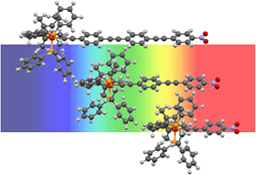
Electronic structures and optical properties of a series of compounds Fe(dppe)(η5-C5Me5){[C≡C(1,4-C6H4)]nNO2} (1–3; n = 1–3) were investigated using density functional theory and time-dependent density functional theory computations. The extension of the carbon-rich chain has a moderate influence on the electronic properties of the compounds in their ground state, but affects notably their spectroscopic properties, with some unexpected hypsochromic shift of the lower energy absorption bands upon carbon chain lengthening.
CH15196Enhanced Squaraine Rotaxane Endoperoxide Chemiluminescence in Acidic Alcohols
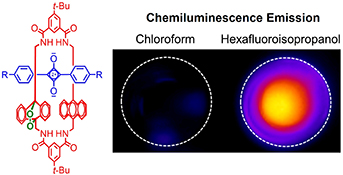
The chemiluminescence of squaraine rotaxane endoperoxide is greatly enhanced in acidic alcohol solvents. The interlocked rotaxane structure is necessary for the increased chemiluminescence, which is most likely due to an O–O cleavage process that produces a squaraine excited state.
CH15146Propargyloxyproline Regio- and Stereoisomers for Click-Conjugation of Peptides: Synthesis and Application in Linear and Cyclic Peptides
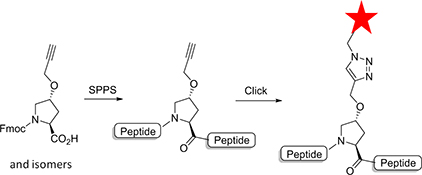
A range of isomers of Fmoc-propargyloxyproline have been prepared to give access to proline-linked peptide conjugates. Such conjugates can retain the binding affinity and/or binding conformation of the parent peptide as shown with studies of ligands for the Y1 receptor and HIV integrase.
CH15169C-Terminal Modifications Broaden Activity of the Proline-Rich Antimicrobial Peptide, Chex1-Arg20
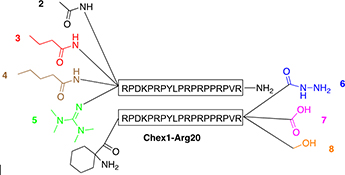
C-Terminal modifications extended the antibacterial activity of a proline-rich peptide to other Gram-negative species. Such modifications may aid in the development of more potent proline-rich antimicrobial peptides with a greater spectrum of activity against Gram-negative bacteria than the parent peptide.
CH15218RhI-Catalyzed Stille-Type Coupling of Diazoesters with Aryl Trimethylstannanes

A RhI-catalyzed cross-coupling of diazoester with arylstannane was developed, which represents the first Stille-type coupling that uses a diazo compound as the coupling partner. The reaction provides an alternative approach for the synthesis of α-aryl esters. RhI–carbene migratory insertion process is suggested to be involved as the key step in this Stille-type coupling.
CH15210Decarboxylation versus Acetonitrile Loss in Silver Acetate and Silver Propiolate Complexes, [RCO2Ag2(CH3CN)n]+ (where R = CH3 and CH3C≡C; n = 1 and 2)

Fragmentation of the complexes [RCO2Ag2(CH3CN)n]+ (n = 1 and 2) is dictated by the R group. Decarboxylation is preferred over loss of a coordinated acetonitrile for R = CH3C≡C, but ligand loss is the sole pathway when R = CH3.
CH15253Investigation of the Photophysical Properties of a Eu3+ Coordination Polymer Bearing an α-Nitrile Substituted β-Diketonate Ligand via Emission and Ultrafast Transient Absorption Spectroscopy
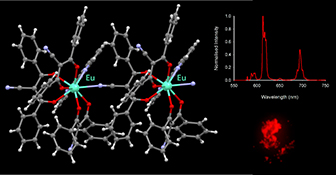
A one-dimensional Eu3+ coordination polymer bearing α-CN substituted β-diketonate and 1,10-phenanthroline ligands was prepared and revealed red emission in the solid state. Analysis of the polymer after re-dissolution and ultrafast transient absorption for model compounds provides some insight into the sensitisation efficiency from the β-diketonate to Eu3+.
CH15139Assembly of New Merocyanine Chromophores with a 1,8-Naphthalimide Core by a New Method for the Synthesis of the Methine Function
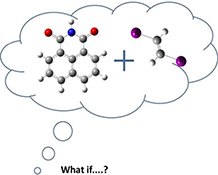
A 2-in-1 chromophore: to piece together two chromophores into one yields a more efficient chromophore system with distinct physical and chemical characteristics. A new technique based on the application of the nitro function as a leaving group in a SN-Ar reaction is developed to circumvent the limitations of using a chlorine or bromine function in the synthesis of monomethine cyanine dyes.
CH153273D-Printable Biodegradable Polyester Tissue Scaffolds for Cell Adhesion
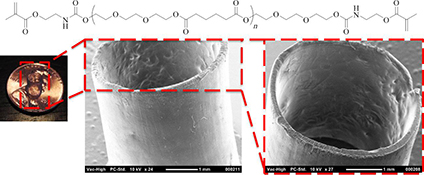
Synthesis and characterization of a biocompatible, biodegradable, and 3D-printable polyester (poly(tri(ethylene glycol) adipate) dimethacrylate) are demonstrated for suitability in vascularized soft-tissue scaffolding applications.
CH14708Synthesis, Absorption, and Fluorescence Studies of Coumaryl-Labelled Amino Acids and Dipeptides Linked Via Triazole Ring
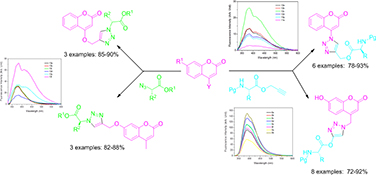
Fluorophores based on 4-triazolyl, 7-hydroxy-4-triazolylmethyl, 4-O-triazolylmethyl and 7-O-triazolylmethyl coumaryl tagged amino acids and dipeptides were synthesized by copper-catalyzed [3 + 2] cycloaddition reaction between azido or alkynyl functionalized coumarins with alkynyl or azido functionalized amino acid and dipeptides, in good to excellent yields. Steady-state absorption and fluorescence properties of the synthesized conjugates were studied.
CH14680Triethylenetetramine-Modified P123-Occluded Zr-SBA-15 Molecular Sieve for CO2 Adsorption
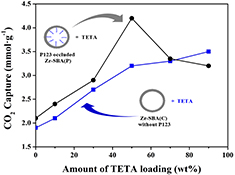
A stable and renewable adsorbent for CO2 adsorption has been developed for the first time by loading triethylenetetramine (TETA) on poly(ethylene oxide)-poly(propylene oxide)-poly(ethylene oxide) (P123)-occluded Zr-SBA-15. The adsorbent exhibits adsorption capacity of 4.27 mmol g–1 at 50°C in a stream of 5 % CO2.
CH15068Synthesis, Structure, and Catalytic Epoxidation Property of a New Phenolato and μ1,1,3-Azido Co-Bridged Polynuclear Manganese(III) Complex Derived from N,N′-Bis(5-methylsalicylidene)ethane-1,2-diamine
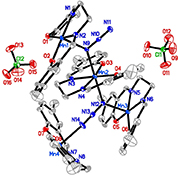
A new phenolato and μ1,1,3-azido co-bridged polynuclear manganese(iii) complex has been synthesised and characterised. The complex converts styrene most efficiently in the presence of PhIO and NaOCl.
CH14715Saturated N,X-Heterocyclic Carbenes (X=N, O, S, P, Si, C, and B): Stability, Nucleophilicity, and Basicity
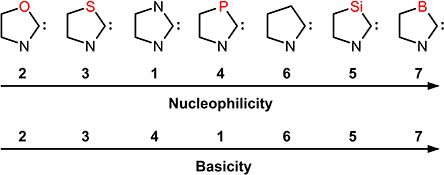
Several substitutions at the α-position of imidazolidin-2-ylidene alter the nucleophilicity, basicity, and stability of this N-heterocyclic carbene. Achieving new carbenes with a higher basicity is an important goal from both fundamental and practical points of view.
CH15014A General Method Towards Efficient Synthesis and Fluorescence Tuning of Carbon Black-Derived Carbon Dots via Controlled Liquid Oxidization
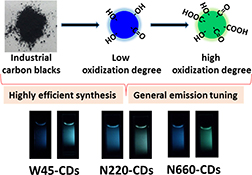
Controlled liquid oxidization of industrial carbon black specimens was reported for the first time as an efficient synthesis and general fluorescence tuning approach to uniform-sized carbon dots with unprecedented dually tuneable emissions. Along with the customizable pH-responsive behaviours, these carbonaceous nanolights offered a promising platform for both sensing and displaying applications.
CH15028N,N-Dialkyl-N′-Chlorosulfonyl Chloroformamidines in Heterocyclic Synthesis. Part XII. Synthesis and Reactivity of the Pyrazolo[3,4-e][1,2,4]thiadiazine Ring System
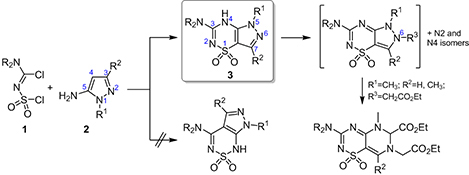
N,N-Dialkyl-N′-chlorosulfonyl chloroformamidines 1 regioselectively reacted with 1-substituted 5-aminopyrazoles 2 to afford pyrazolo[3,4-e][1,2,4]thiadiazine dioxides 3. Methylation of 3 occurred at N2, N4, and N6. Benzylation occurred preferentially at N2. Alkylation at N6 with ethyl bromoacetate resulted in pyrazole ring expansion affording pyrimido[4,5-e][1,2,4]thiadiazines. Compounds 3 were unreactive towards acylating agents.



